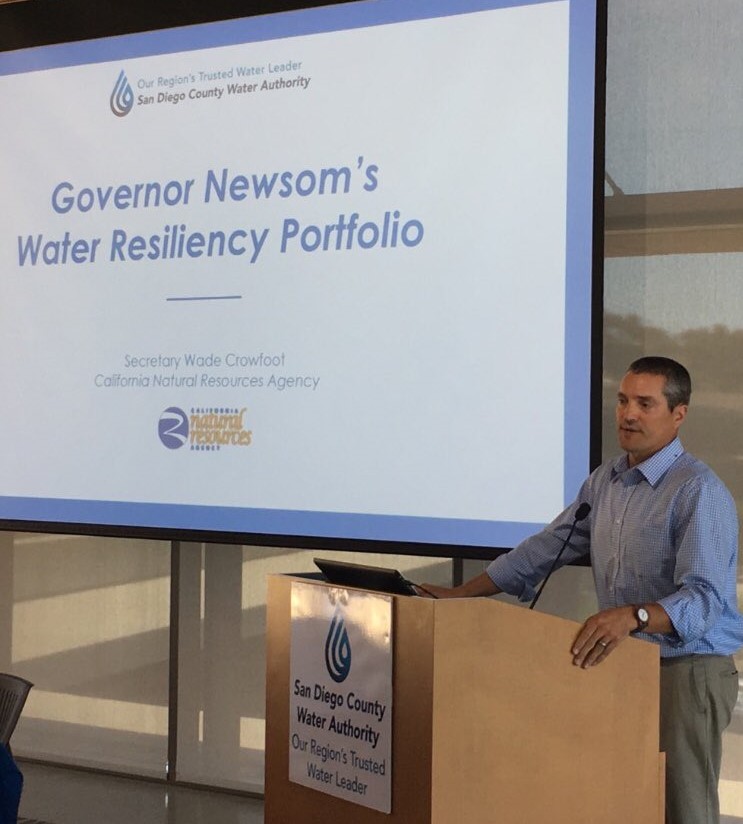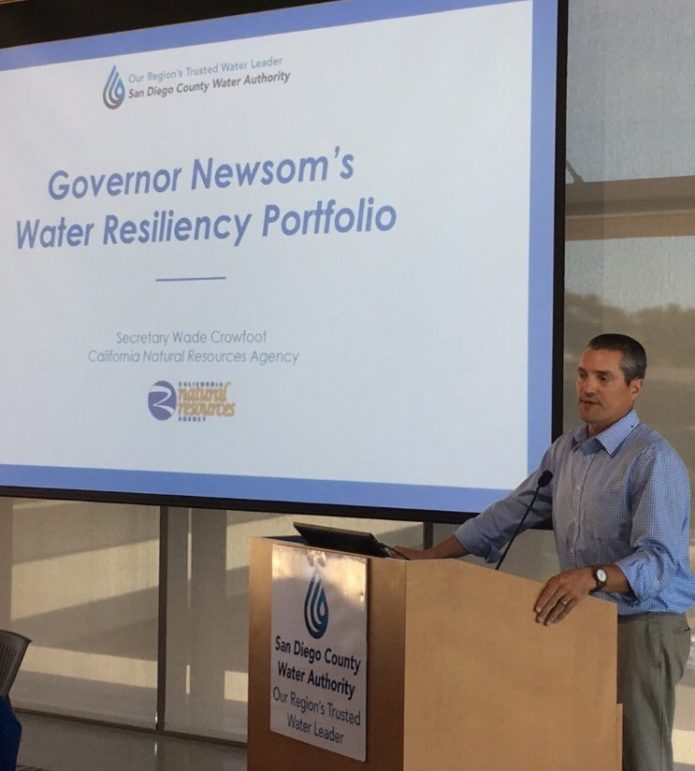
California’s water resiliency was the focus of a panel discussion held Thursday, July 18 in San Diego with key State water leaders in attendance, including California Natural Resources Agency Secretary Wade Crowfoot, Deputy Natural Resources Secretary Tom Gibson, State Department of Food and Agriculture Secretary Karen Ross, and State Water Resources Control Board Chair E. Joaquin Esquivel. An additional 150 leaders in water, local government, business, farming and environmental justice, along with tribal leaders, also participated in the event, which was meant to consider the future of California’s water management in the wake of Gov. Gavin Newsom’s April Executive Order calling for a water resiliency portfolio that meets the State’s needs through the 21st Century.
From Imperial Valley, representatives from Imperial Irrigation District (IID), Imperial County, Imperial Valley Economic Development Corp., local farming organizations and environmental justice organizations attended.
With the governor’s water leaders tasked with developing a water portfolio for the State, the San Diego County Water Authority provided a tour before the panel discussion to better understand how the Water Authority has implemented a portfolio approach to provide a reliable supply of water to its member agencies. Over the past three decades, the Water Authority has shifted from relying on one primary source of water to a diverse supply that includes the Quantification Settlement Agreement (QSA), the development of seawater desalination, the building of the Twin Oaks Water Treatment Plant, along with the construction and expansion of local storage and water distribution systems. Conservation has also played a pivotal role in the diversified portfolio. During the panel discussion and luncheon, Water Authority Board Chair Jim Madaffer spoke of the QSA as a key component of that diverse water portfolio and of the importance of the relationship between IID and the Water Authority both now and into the future.
Secretary Crowfoot spoke highly of the Water Authority’s efforts toward building a water portfolio approach to water management. He also spoke of the need to work together on the State’s water issues. “Governor Newsom wants us to think long and broadly on water,” said Crowfoot. “He wants us to get away from the silos and conflicts on water in California – the mindset of environment groups versus farmers, north versus south, urban versus rural – and work together on water resiliency.”
One of the key ideas shared during the gathering was the concept of a regional conveyance system to move QSA supplies directly between the Imperial Valley and San Diego region. The Water Authority Board of Directors in June approved a two-phase study to determine if such a system is feasible and could serve “multi-use” benefits across Southern California, including providing operational storage opportunities for IID and help for the Salton Sea restoration efforts. IID General Manager Henry Martinez, who participated in the panel discussion, said the proposed regional conveyance system could fit in with IID’s long-term planning. Secretary Crowfoot also spoke in support of studying such a regional pipeline as an idea worth exploring and one that could fit into the State’s portfolio mix.
In many ways the discussion of California’s future water management is just beginning. The dialogue will continue, and this blog can be a resource of information, especially if readers have questions on the issues addressed here. If there are questions, see the “Ask Darren” page on this website, and we can explore the answers.
Stay tuned for more to come.
